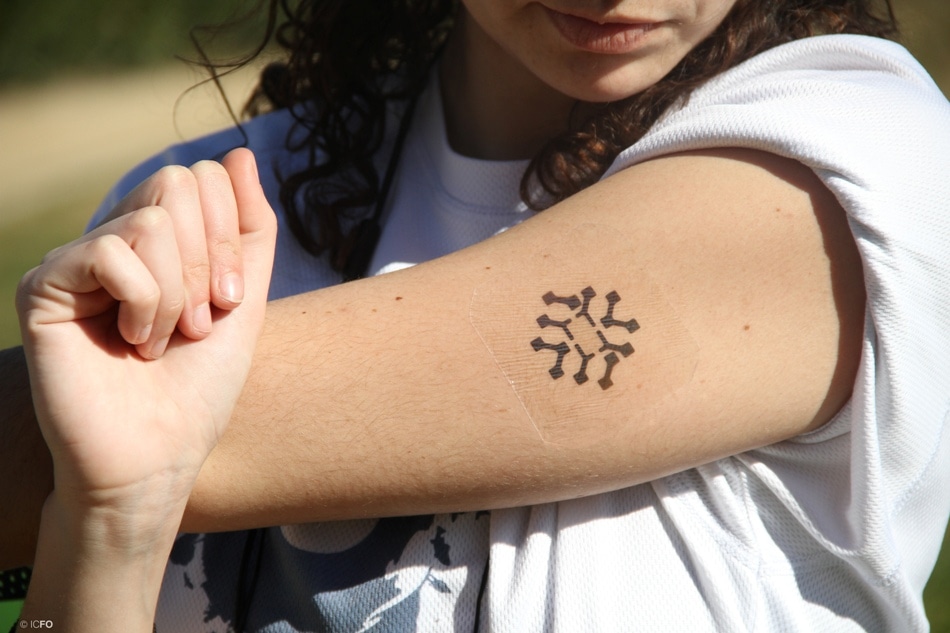Feb 18 2019
The Graphene Pavilion, organized by the Graphene Flagship and supported by the European Commission and GSMA, is returning to Mobile World Congress (MWC) 2019 with more than 20 graphene-based prototypes, four of which are created by the Graphene Flagship partner ICFO, based in Barcelona. The goal of these technologies is to change mobile phones into life-saving gadgets.
 Graphene-enabled fitness band measures heart rate, hydration, oxygen saturation, breathing rate, and temperature. The technology will be showcased at MWC19. (Image credit: ©ICFO)
Graphene-enabled fitness band measures heart rate, hydration, oxygen saturation, breathing rate, and temperature. The technology will be showcased at MWC19. (Image credit: ©ICFO)
The first of ICFO’s devices on display will enable customers to track their level of exposure to sunlight using a UV sensor. Built as a flexible, transparent, and disposable patch, it links to a mobile device and alerts the user once he/she has reached a demarcated threshold of sun exposure.
Using the same central technology as the UV patch, ICFO’s fitness band is being designed to measure breathing rate, heart rate, oxygen saturation, hydration, and temperature, while keeping track of the users when they are exercising, for example. However, the fitness band achieves more than just measuring physical activity.
Visualize this scenario: A person is trekking in the remote Amazon jungle with inadequate access to water. By computing the skin hydration of his/her body with ICFO’s fitness band, the user can improve water intake, thereby halting any sort of dehydration. Likewise, an adventurer hiking to the peak of Mount Everest could use the band to correctly monitor oxygen saturation in blood. The high altitude can extremely impact oxygen saturation in the body. Using the band, the hiker can track these levels and emit a warning if oxygen saturation in the blood falls radically below a pre-determined level.
Besides these prototypes being displayed at MWC 2019, ICFO will also exhibit two other light-based graphene technologies. These include a graphene-enabled hyperspectral image sensor and the world’s smallest single pixel spectrometer, both possessing broadband capabilities, beyond what was once seen as probable without the use of expensive and bulky photodetection systems.
By facilitating spectroscopy in such small dimensions, consumers could, at present, be fitted with tools that earlier were only available to extremely specialized laboratories. From the detection of fake drugs to the identification of unsafe substances within a product that one uses or the food that is consumed, compact, economical spectrometers could become a vital accessory of a person’s daily life.
Built into a smartphone camera, the graphene-based camera sensor allows phones to see more than what's visible to the human eye. Made up of hundreds of thousands of photodetectors, this incredibly small sensor is highly sensitive to UV and infrared light. This technology would allow users in the supermarket to hold the camera to fruit and infer which is the most fresh piece. Or, in a more extreme example, the camera could be used for driving in dangerously dense fog by providing augmented outlines of surrounding vehicles on the windscreen.
Frank Koppens, Group Leader, Graphene Flagship partner ICFO, and Chair of Graphene Flagship MWC Committee.
Between February 25th and 28th, the Graphene Pavilion at MWC will showcase these technologies in NEXTech Hall 8.0 Stand 8.0K31. Visitors can meet experts who developed these applications.
Future wellness sensing